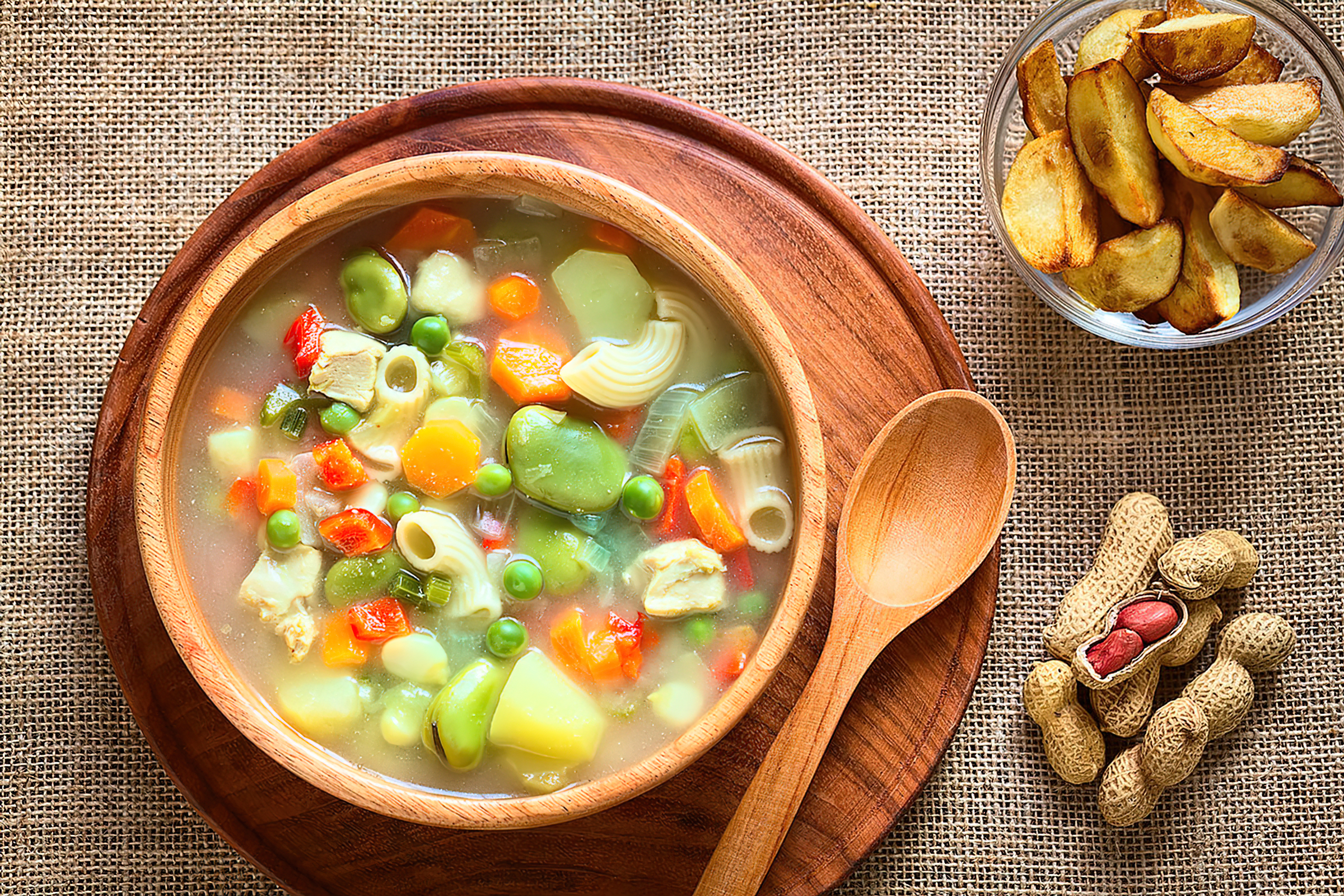Bolivian cuisine is a treasure trove of delightful dishes that are deeply rooted in the country’s cultural heritage and rich agriculture. One such dish is the Sopa de Mani, a creamy and nutty soup that is both nourishing and flavorsome.
The Origins of Sopa de Mani
![]()
Sopa de Mani, which translates to ‘peanut soup’, is a traditional Bolivian dish. It is believed to have originated from the culinary practices of the indigenous people living in the region. The soup incorporates local ingredients like peanuts, vegetables, and sometimes meat, making it a wholesome meal.
The Signature Ingredients
The highlight of the Sopa de Mani is, of course, peanuts. However, the recipe also often includes potatoes, carrots, and peas, providing a hearty vegetable base. Some variations include meat, usually beef or chicken. The rich ingredients combine to create a creamy, nutty, and hearty soup, perfect for a filling lunch or dinner.
How to Make Sopa de Mani
Let’s dive into the recipe of this delightful soup.
Ingredients:
- 1 cup raw peanuts
- 6 cups chicken or vegetable broth
- 1 medium onion, chopped
- 2 cloves garlic, minced
- 1 cup diced carrots
- 1 cup diced potatoes
- 1 cup fresh or frozen peas
- 1 cup cooked chicken, shredded (optional)
- Salt and pepper to taste
- Fresh parsley for garnish
Preparation:
- Start by toasting the peanuts in a dry pan over medium heat until golden brown. Be sure to keep an eye on them, as peanuts can burn quickly. Allow them to cool.
- Once cooled, blend the peanuts in a food processor until they form a smooth paste.
- In a large pot, sauté the onion and garlic until translucent.
- Add the carrots, potatoes, and peas to the pot. Sauté for a few minutes until the vegetables start to soften.
- Add the peanut paste to the pot and stir well to combine.
- Gradually add the broth to the pot, stirring constantly to ensure the peanut paste is well incorporated.
- If using, add the shredded chicken to the pot.
- Allow the soup to simmer for about 20 minutes, or until the vegetables are tender.
- Season with salt and pepper to taste.
- Serve hot, garnished with fresh parsley.
Pairing Sopa de Mani with Bolivian Specialties
Although Sopa de Mani is a complete meal in itself, it can also be paired with various Bolivian specialties to create a more diverse dining experience.
Salteñas: Bolivian Empanadas
Salteñas are a type of Bolivian empanada filled with meat and vegetables, with a slightly sweet crust. They make for a delightful appetizer before enjoying your Sopa de Mani.
Ingredients:
- For the dough:
- 3 cups flour
- 1/2 cup sugar
- 1/2 cup butter, melted
- 1 cup water
- For the filling:
- 2 chicken breasts, cooked and shredded
- 1 medium onion, chopped
- 1 cup frozen mixed vegetables
- 1 teaspoon cumin
- Salt and pepper to taste
Preparation:
- Combine the flour and sugar in a bowl, then add the melted butter and water. Knead until a smooth dough forms.
- For the filling, sauté the onion in a pan until translucent. Add the vegetables, chicken, cumin, salt, and pepper, and cook until everything is well combined.
- Roll out the dough and cut it into circles. Place a spoonful of filling in the center of each circle, fold the dough over, and seal the edges.
- Bake at 200°C (approximately 392°F) for 25 minutes, or until golden brown.
Llajwa: Bolivian Tomato and Chili Salsa
For a spicy kick, try Llajwa, a traditional Bolivian salsa made with tomatoes and locoto peppers.
Ingredients:
- 3 medium tomatoes
- 1 locoto pepper (or substitute with jalapeno)
- 1 small onion
- A handful of fresh cilantro
- Salt to taste
Preparation:
- Blend the tomatoes, pepper, onion, cilantro, and salt in a food processor until smooth. Adjust seasoning as needed.
Pairing the Sopa de Mani with Salteñas and Llajwa not only adds variety to your meal but also allows you to enjoy a broader spectrum of flavors found in Bolivian cuisine. As you embark on this culinary journey, you will discover the unique blend of ingredients and flavors that make Bolivian food truly special.